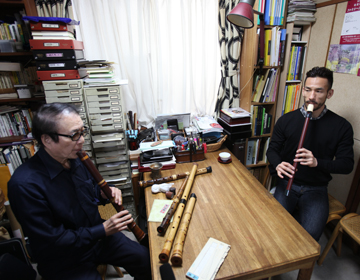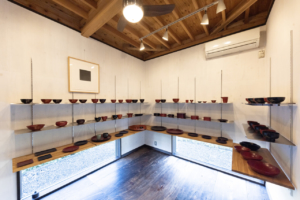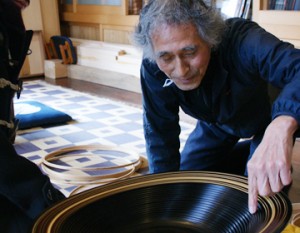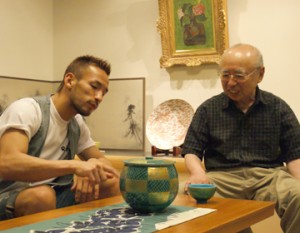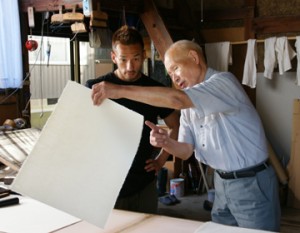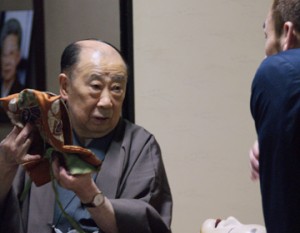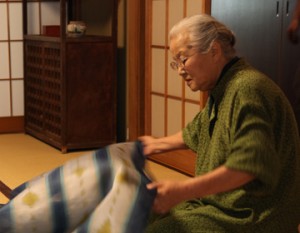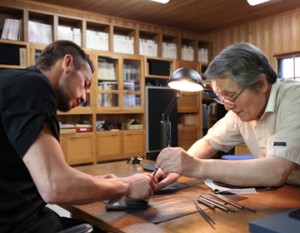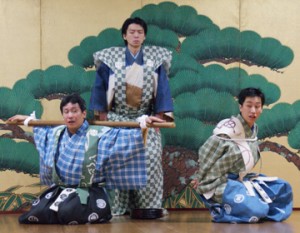How he got started

Hozan Yamamoto was born in 1937. He is a master of Japanese music, a ”shakuhachi” player and a composer, who was designated as Important Intangible Cultural Asset holder in 2002. He was always exposed to the ”shakuhachi” music played by his father, Hozan Yamamoto the 1st. He started to play when he was 9, and has been thoroughly enchanted by the mystic world of ”shakuhachi” to this day.
The basics to shakuhachi is how interesting it is, he told us. ”The official story is that I studied under my father, but I actually got started just playing with the instrument.” His grandmother and mother were ”okoto” players, and so he learned about the basics of Japanese music from them, but Yamamoto’s background shows that he didn’t just follow a easy path.
”I asked many performers to allow me to play with them.” When he first came out to the city, he worked part time jobs to make ends meet. At times he would play in hotel lobbies, play with classical or jazz musicians. He says that his ”shakuhachi” is self-taught, since it was developed through his interaction with other musicians.
The space becomes the instrument

Mr.Yamamoto looks back to his younger days and says, ”I always used to love jazz. It was a way to relieve stress.”
”I was lucky I found jazz. By learning to perform impromptu, it helped me write music that I would never have been able to if I had just been involved in traditional Japanese music.”
Nakata commented ”I’ve never heard shakuhachi jazz!”
”Then, let’s give you the opportunity. One of the things that amazed me is that with jazz, you use a microphone. With ”shakuhachi” or other traditional Japanese music, that’s never done. That’s why we need the music to resonate to every part of the venue. If the music is being played in this room, the entire room has to vibrate and become an instrument.”
With that, Yamamoto picked up his amber-colored ”shakuhachi” and played a melody. The clear, vibrant melody filled the room. The sound that we hear comes from the instrument, yet it seems as though it fills the room and blends in with the space. The charismatic tone of the ”shakuhachi” is so powerful it turns the entire venue into an instrument.
Thinking I’d leave without being able to make a sound…
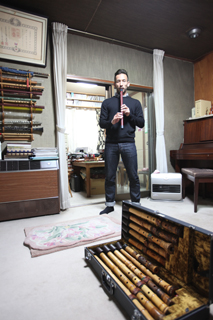
Similar to the trumpet and clarinet, one is lucky to be able to make a sound on a ”shakuhachi” on the first try. ”Yamamoto told Nakata, ”I’d say you’re cut out for it if you get a note out on your first try.” Nakata gave it a try but gets nothing. As Yamamoto had pointed out, it was not an easy task. But not being one to give up, Nakata kept trying with instructions from the master. ”This is the correct angle, and this is how to blow it.” Yamamoto guided him patiently.
Then all of a sudden, there was a sound. While Nakata looked up in surprise, Yamamoto was even more surprised. He said, ”To be honest, I didn’t think you’d be able to produce a sound while you were here. This is wonderful.”
Nakata’s expression changed to pure delight upon being praised by the master. This may be the ”amusement” Yamamoto had referred to. Encountering something for the first time. Producing the first note. The whole process is a succession of happy experiences, motivating you to keep trying for more. ”Enjoyment is fundamental. Then comes the love for the instrument. It’s the same with sports, isn’t it?” Yamamoto said with a smile.



